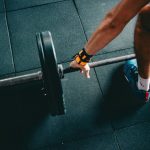The core is where the most of the body’s power is derived. It provides the foundation for all movements of the arms and legs. The core must therefore be strong and be capable of dynamic flexibility and synergistic function in its movements in order to achieve maximum performance.
The motions of the human body are not isolated to one muscle or tissue moving in one specific direction. Rather, each movement is a complex event involving agonists and antagonist structures that work together to create changes in position and/or location, and to stabilize the body in all three directional planes. Regardless of what sport one plays, it is essential to have core strength and trunk stability to maximize performance and prevent injury.
What Makes Up the Core?
The foundation of the core is much more than the abdominal muscles. It includes muscles deep within the torso, from the pelvis up to the neck and shoulders. The core includes the following structures:
- Multifidus – deep spinal muscles that run segmentally from the neck (C2) to the sacrum. They produce extension and, to a lesser degree, rotation and lateral flexion forces that provide stability to joints at individual levels of the spine.
- Interspinales, Intertransversarii, Rotatores – deep structures that attach directly to the spinal column. These are very important for rotatory motion and lateral stability.
- External Obliques – abdominal muscles that attaches at the lower ribs, pelvis and abdominal fascia.
- Internal Obliques – abdominal muscles that attaches at the lower ribs, rectus sheath, pelvis and thoracolumbar fascia.
- Transversus Abdominis – abdominal muscles that attaches at the lower ribs, pelvis and thoracolumbar fascia, and rectus sheath. These abdominal muscles work together to transmit a compressive force, and act to increase intra-abdominal pressure that stabilizes the lumbar spine. They also work individually to perform trunk rotation, while the internal and external obliques on the same side can work together, or synergistically, to laterally flex the spine.
- Rectus Abdominis – abdominal muscle that attaches at the fifth through seventh ribs, the lower sternum and the front of the pubic bone. This muscle flexes the spine, compresses the internal organs of the abdomen and transmits forces laterally from the obliques. It is a common fallacy that the upper and lower rectus are isolated differently. Training the rectus can be done with one exercise.
- Erector Spinae – help to counterbalance all the forces involved in spinal flexion. They begin as the sacrospinalis tendon that attaches at the sacrum and ilium. This tendon then gives rise to different muscles that run up the spine and obliquely to attach at lateral parts of the vertebrae and the ribs. In the cervical region, these muscles attach at the base of the skull.
- Quadratus Lumborum – attaches at the 12th rib and the upper four lumbar vertebrae and the pelvis. It stabilizes the lumbar spine in all planes of motion, stabilizes the 12th rib and the attachment of the diaphragm during respiration and laterally flexes the trunk.
- Latissimus Dorsi – this is the largest spinal stabilizer. It attaches via the thoracolumbar fascia to the lumbar vertebrae, sacrum and pelvis, and runs upward to the humerus. It assists in lumbar extension and stabilization, and also performs pulling motions through the arms.
- Thoracolumbar Fascia – connects the latissimus dorsi, gluteal muscles, internal obliques and transverse abdominis, supplies tensile support to the lumbar spine and is used for load transfer throughout the lumbar and thoracic regions.
- Abdominal Fascia – connects to the obliques and rectus abdominis, and to the pectoralis major. Fascial connections that cross the midline transmit forces to the muscles of the opposite side of the body.
Training the Core
A common misconception is that training the core simply means pefoming sit-ups and back extensions. An efficient core routine consists of multiplanar movements – training in all planes of motion. As the body moves, the center of gravity changes, and forces exerted by, and on, the body’s tissues are constantly changing.
Dynamic stabilization must be included to increase proprioception and stability in the trunk, as well as in the rest of the body. This allows the parts of the body to react efficiently to external forces and stresses, such as gravity, changes in terrain and carrying loads, as well as the internal forces exerted by other muscles.
Dynamic stability is best achieved through training in functionally practical positions that mimic activities or movements in one’s particular sport, or in life as a whole. With this in mind, one can conclude that most core training that is done while sitting or lying down and limiting pelvic movement has little functional value. Medicine balls, balance boards and stability balls are great tools for core training and should be integrated into every program.
Core exercises should include strengthening, as well as challenges such as standing one-legged and/or two-legged on stable and unstable surfaces, reacting to external forces such as a partner’s light push or the catching and throwing of a medicine ball, and moving the joints of the body through all planes of motion.
The goal of functional core training is to develop in the core a system of efficient automatic responses to work as a stable base from which to generate optimal force and motion.
References
1. McGill, S, Ultimate Back Fitness and Performance: Ontario. Wabuno Publishers. 2004.
2. Kendall FP, McCreary EK, Provance PG. Muscles: Testing and Function. 4th ed. Philadelphia: Lippincott Williams and Wilkins. 1993.
3. Runnersworld.com






